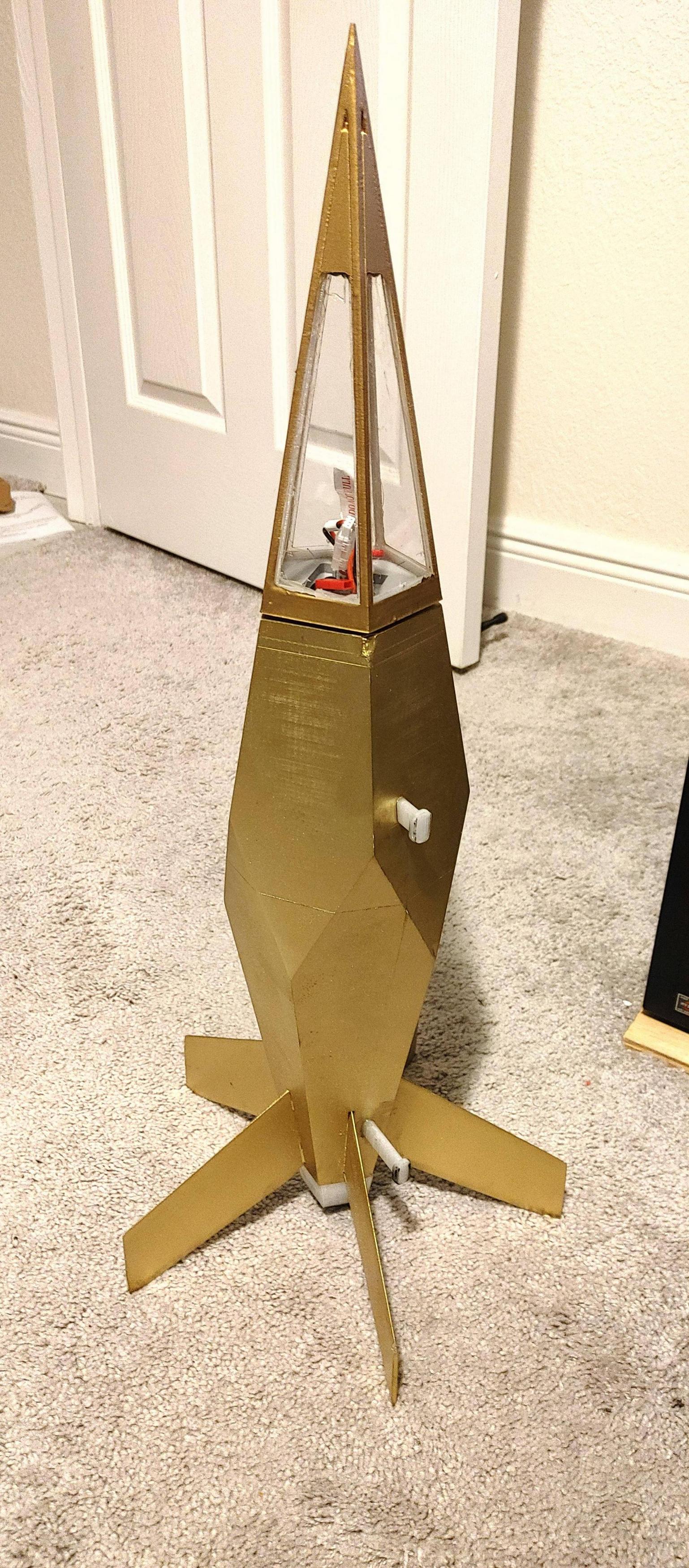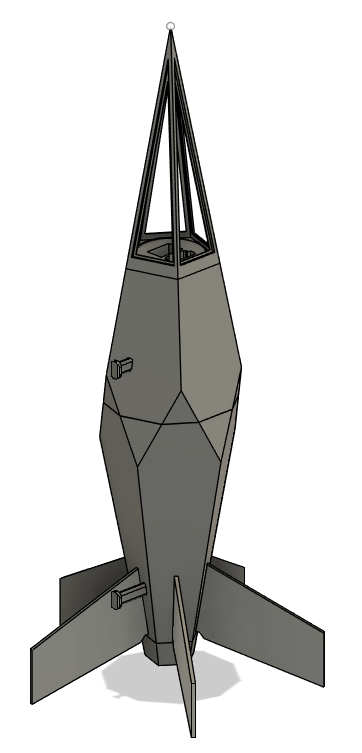I am Exploring 3D printing., and there is a lot to know, and I know very little. I don't know where to begin.
Back in November & December, I met a flyer who constructed a non-cylindrical rocket, with 5 fins. Imagine 5 long isosceles triangles bound together on the top half and 5 shorter isosceles triangles on the bottom half, with 5 fins sticking out. The bottom is squared of and the rocket motor sticks out about .5" The center tube is the motor mount, and a channel for the launch lug lies adjacent and parallel to the center tube. Entrance and exit holes are beveled for easy rod insertion access. The fins are made of basswood, and I think they are TTW.
The flyer tells me he started with a dodecahedron, Playing with the sides in some sort of CAD program (I assume), he shaped it to what he thought was suitably aerodynamically acceptable. He says his printer uses a special type of printing material that allows him to raise the temperature to make the material foam as it prints. Doing this also increases the speed at which he can print, and it reduces the weight, because it is expanded, yet still durable. He calls the rocket, "Crystal" as it resembles a natural forming crystal.
He allowed me to pick it up. I have hefted 3D fin cans in the past and they felt heavy. This rocket which is 95% 3D printed, it seems very light for a 20" tall rocket.
Do all 3D printing machines have this capability or is it some sort of special feature? What kind of material would have this capability? I am under the impression it is unique. How does one determine this capability when shopping for 3D printers and printing material? I am also under the impression that CAD software is very expensive. Is it easy to integrate CAD with 3D printing software? Am I asking the right questions?
I look forward to all comments and I thank you for your input and patience.
c0c0m0ke
Back in November & December, I met a flyer who constructed a non-cylindrical rocket, with 5 fins. Imagine 5 long isosceles triangles bound together on the top half and 5 shorter isosceles triangles on the bottom half, with 5 fins sticking out. The bottom is squared of and the rocket motor sticks out about .5" The center tube is the motor mount, and a channel for the launch lug lies adjacent and parallel to the center tube. Entrance and exit holes are beveled for easy rod insertion access. The fins are made of basswood, and I think they are TTW.
The flyer tells me he started with a dodecahedron, Playing with the sides in some sort of CAD program (I assume), he shaped it to what he thought was suitably aerodynamically acceptable. He says his printer uses a special type of printing material that allows him to raise the temperature to make the material foam as it prints. Doing this also increases the speed at which he can print, and it reduces the weight, because it is expanded, yet still durable. He calls the rocket, "Crystal" as it resembles a natural forming crystal.
He allowed me to pick it up. I have hefted 3D fin cans in the past and they felt heavy. This rocket which is 95% 3D printed, it seems very light for a 20" tall rocket.
Do all 3D printing machines have this capability or is it some sort of special feature? What kind of material would have this capability? I am under the impression it is unique. How does one determine this capability when shopping for 3D printers and printing material? I am also under the impression that CAD software is very expensive. Is it easy to integrate CAD with 3D printing software? Am I asking the right questions?
I look forward to all comments and I thank you for your input and patience.
c0c0m0ke





